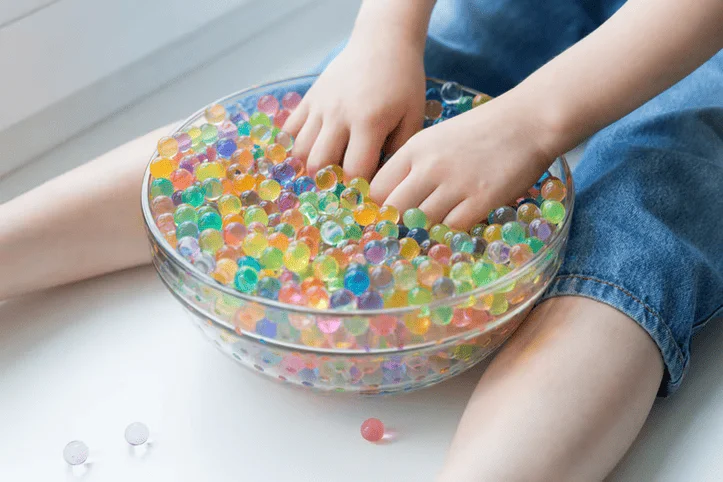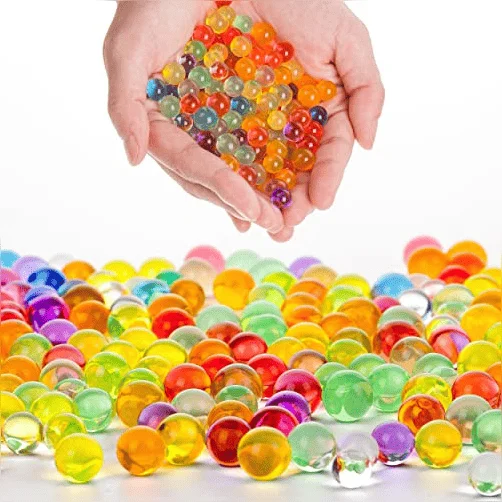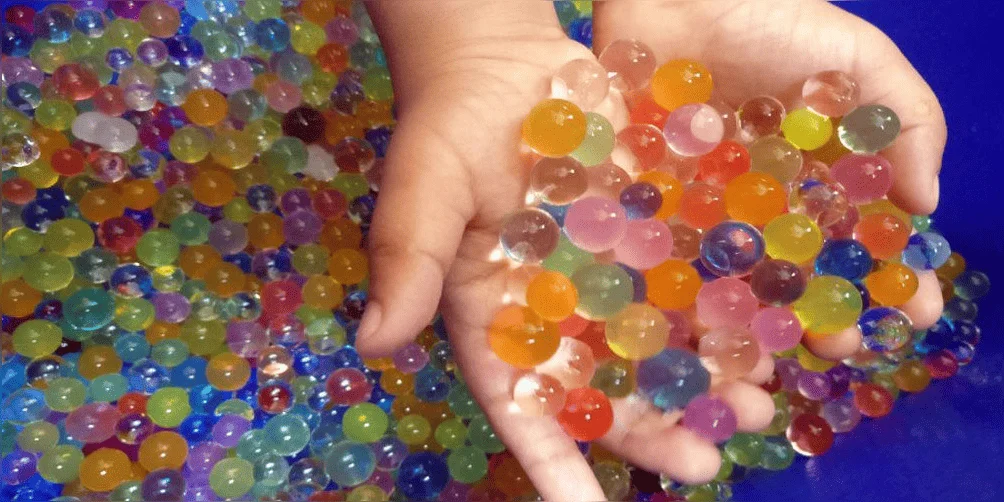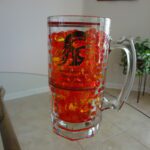Water beads have become a trendy item in homes, often used in sensory play activities for kids or as decorative pieces. Their vibrant colors and soft texture make them irresistible to young children, but there’s a hidden danger parents and caregivers need to be aware of. These small beads, when swallowed or placed in ears, can pose serious health risks. In this blog, we’ll explore what water beads are, the potential hazards they present, and how you can protect your child from harm.
Table of Contents
What Are Water Beads?
Water beads, also known as hydrogel beads, are small, dry beads made from superabsorbent polymers. When placed in water, they can grow up to 200 times their original size, transforming into soft, jelly-like spheres. They are often used for decorative purposes in vases or gardens and are popular in sensory play activities for children.

Their bright colors and squishy texture make them appealing to kids, and since they seem harmless, many parents use them as a sensory toy to help with motor skills and tactile exploration. However, this appearance of safety is deceptive because water beads pose serious risks if misused.
The Risks of Water Beads
1. Choking Hazard
One of the most immediate risks water beads present is choking. Young children, especially toddlers, love to put things in their mouths, and since water beads are small and colorful, they may seem like candy. If a child accidentally swallows a water bead, it can get lodged in their throat, blocking their airway and leading to choking.
2. Intestinal Blockage
A more dangerous scenario occurs when a child swallows a water bead, and it passes into their digestive system. Once inside the stomach, the bead absorbs fluids and can expand significantly. This swelling can lead to an intestinal blockage, which may require surgical intervention. Symptoms of intestinal blockage include vomiting, stomach pain, and constipation. If you suspect your child has swallowed a water bead and shows these symptoms, seek medical help immediately.
3. Aspiration Risk
In addition to swallowing, there’s a risk of water beads being aspirated into the lungs, especially in younger children who don’t yet have full control over their swallowing reflex. Inhaled water beads can cause breathing difficulties and may require medical procedures to remove.
4. Toxicity
While water beads are marketed as non-toxic, the risk lies not in chemical poisoning but in their physical properties. Their ability to expand poses the biggest threat to small children, as the beads can grow large enough to cause serious physical harm.
Water Beads and Ear Safety
Aside from the risks of swallowing, there’s another way water beads can harm children—when they’re placed in the ears. It’s not uncommon for toddlers, in their curiosity, to insert small objects like beads into their ears. Water beads in the ear can cause a number of serious issues.
1. Blockage of the Ear Canal
Water beads can block the ear canal, leading to discomfort, pain, and even hearing loss. Since water beads expand when exposed to moisture, placing them in the ear can result in further complications, making it difficult to remove them without medical assistance.
2. Swelling and Ear Damage
Once inside the ear, water beads can absorb moisture and begin to swell, putting pressure on sensitive parts of the ear such as the eardrum. This can lead to damage, infection, and significant pain. If not addressed quickly, it can result in long-term hearing problems.
3. Infection Risks
The presence of a foreign object in the ear can also increase the risk of infections. As the bead swells and becomes stuck, it can trap bacteria, leading to painful infections that may require antibiotics or more invasive treatments.

What to Do If Water Beads Are Swallowed or Put in Ears
Accidents happen, and it’s essential to know what steps to take if your child swallows or inserts water beads into their ears.
If Water Beads Are Swallowed:
- Stay Calm: Panicking won’t help anyone. Keep calm and assess the situation.
- Monitor for Symptoms: If the bead passes without any symptoms, it may not cause harm. However, keep an eye out for vomiting, stomach pain, bloating, or changes in bowel movements.
- Seek Medical Attention: If your child is showing symptoms of intestinal blockage, seek medical attention right away. The doctor may need to take an X-ray or perform surgery to remove the bead if it has caused a blockage.
If Water Beads Are Put in Ears:
- Do Not Use Water: Do not try to flush the bead out with water, as this will cause it to expand further, making removal more difficult.
- Visit a Doctor: The safest course of action is to take your child to a doctor, who can carefully remove the bead without causing additional harm.
- Watch for Signs of Infection: If the ear becomes red, swollen, or if your child complains of pain, there may be an infection, and you’ll need to seek further treatment.
Preventing Accidents with Water Beads
The best way to avoid accidents is to take proactive safety measures. Here are a few tips to help keep your child safe around water beads:
1. Supervise Playtime
Never leave young children unattended with water beads. Always supervise playtime, especially with toddlers, to ensure they’re not putting the beads in their mouths or ears.
2. Store Water Beads Safely
Keep water beads out of reach when not in use. Store them in sealed containers that children cannot open. It’s also a good idea to explain to your child that these beads are not food and shouldn’t be placed in their mouths or ears.
3. Age-Appropriate Toys
Make sure to follow age guidelines when choosing toys for your child. Sensory play with water beads may not be suitable for very young children who are still exploring the world by putting things in their mouths. Consider safer alternatives for sensory play, such as playdough, sand, or non-toxic modeling clay.
4. Alternative Safe Sensory Play Ideas
There are many other safe options for sensory play that don’t carry the same risks as water beads. For example, you can use dried rice, beans, or pasta for tactile exploration, or introduce your child to edible sensory play materials like whipped cream or yogurt.
Conclusion
While water beads can be a fun and visually appealing addition to sensory play and home décor, they come with significant risks, especially for young children. The dangers of choking, intestinal blockage, and ear damage are real, and parents need to be aware of these hazards. By taking simple preventive measures, such as supervising playtime and storing water beads safely, you can help ensure that your child stays safe. Always act quickly if you suspect your child has swallowed or inserted a water bead into their ear, and consult a healthcare professional to prevent serious complications.

Jessica Muller is an accomplished writer at Water Beads Design, holding a Bachelor’s degree in Fine Arts with a focus on Design and Visual Communication. Her expertise in water bead artistry is backed by over 5 years of experience in the field, where she has developed a deep understanding of artistic techniques and design trends. Jessica’s writing reflects her extensive knowledge and creative approach to water bead design. For professional tips and innovative ideas, follow Jessica on Instagram.





